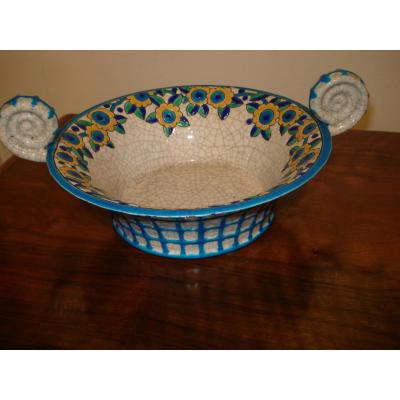Louis-Henri Nicot (1878-1944) studied art at the Beaux Arts in Rennes with Coquelin, Lenoir and Ronsin, then in Paris with Falguière, Mercié and Peter. During these very academic years, the artist was frequently honoured. He completed his studies in 1909.
The Breton theme soon appeared in his work. After the 14-18 war, Nicot became one of Brittany's leading sculptors. From the outset, he did not place himself among the artists who promoted the greatest modernism. He produced many war memorials in Brittany: Pleurtuit 1920, Guéméné-Penfao 1921, Montfort-sur-Meu 1923. He also designed monuments outside Brittany, such as the Monument to the Army of Occupation of the Rhine in Mainz. In 1922, he became a teacher at the Ecole des Arts Appliqués à l'Industrie.
His collaboration with Manufacture Henriot came about through Mathurin Méheut, a long-standing acquaintance, and began in 1924. For them, he created extremely local subjects that played on the persistence of a certain staid image of Brittany, unless it was an ethnographic approach, given the precision of the costumes. Thanks to Nicot, Brittany regained its reassuringly conservative image, which artists with a more modern bent were trying to shake off through the decorative arts.
Regular exhibitions, numerous busts, steles and commemorative works, a continuous presence at the Salon des Artistes Français (French Artists' Salon), rewarded with a gold medal in 1933, and official recognition as a Chevalier de la Légion d'Honneur the same year, all contributed to making Louis-Henri Nicot both a recognised and consensual artist. The artist died in 1944, while preparing to publish new ceramic works in Quimper.

































 Le Magazine de PROANTIC
Le Magazine de PROANTIC TRÉSORS Magazine
TRÉSORS Magazine Rivista Artiquariato
Rivista Artiquariato